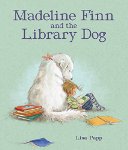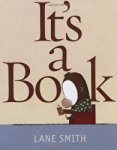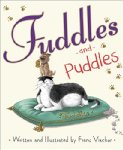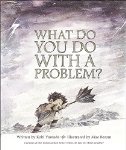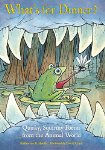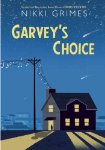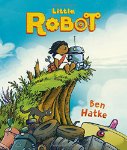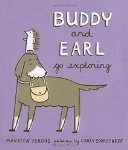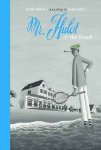Every September I look forward to fall. I am eager for cooler days, rain (after weeks and weeks of dry weather), and the treats that the fall season brings. Apples, pears and pumpkins start to appear in the farmer's market, and I start thinking about making apple and pumpkin breads and coffee cakes. It is a time of change and new beginnings for me.
Today's poetry title tells the story of a young girl whose uncle has suffered a great loss, and who comes to visit her and her family as the apples are starting to fall from the tree in their yard. For him this is a time for reflection, and though he does not know it at first, it is also a time for new bittersweet beginnings.
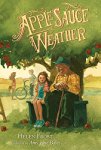 Applesauce weather
Applesauce weather
Today's poetry title tells the story of a young girl whose uncle has suffered a great loss, and who comes to visit her and her family as the apples are starting to fall from the tree in their yard. For him this is a time for reflection, and though he does not know it at first, it is also a time for new bittersweet beginnings.
 Applesauce weather
Applesauce weather
Helen Frost
Illustrated by Amy June Bates
Poetry
For ages 8 to 10
Candlewick Press, 2016, 978-0-7636-7576-9
Faith has been waiting for this day, the day when the
first apple falls from the apple tree that Aunt Lucy planted all those years
ago. Over the years Uncle Arthur and Aunt Lucy would always arrive at Faith’s
house on this day. Somehow they always knew when the first apple fell. Then
Aunt Lucy died and Faith’s parents and brother believe that maybe Uncle Arthur
will not come this year. Little Faith does not lose hope though. She waits for
Uncle Arthur.
At his home
Uncle Arthur thinks about his beloved Lucy and remembers how his wife always
knew when the first apple had fallen, when it was time to gather with the
family to pick apples and make applesauce. He does not know if he can bear to go
without her, or if the family is even expecting him.
Faith’s big
brother Peter thinks Faith is being silly. She should give up waiting and
accept that Uncle Arthur is not coming. Then, to everyone’s surprise, Faith’s
faith in Uncle Arthur is rewarded, and in the evening of that day the old man
arrives.
Every year Faith
asks Uncle Arthur what happened to his missing finger - he only has four and
half fingers on his right hand – and every year he tells her another story (a
tall story) of what happened to his finger. This year he seems reluctant to
tell the stories so beloved by everyone in the family. This year he is quieter.
He is wrapped up in the memories of the times he shared with the girl and woman
who became his wife. He remembers how he and Lucy, who were neighbors, became
friends, and how their friendship grew into love when they were teenagers. He
looks at the house where she used to live and remembers how he used to wait at
night to see a light blinking in her window, which was her message telling him
that she loved him.
Faith seems to
know that Uncle Arthur is feeling lost and so she holds his hand, the one
missing half a finger, and she says nothing. Faith wonders if her uncle has no
more stories to tell but she does not ask. Instead, she walks down the road
with him every day and she tells him that Peter is sweet on the girl who is
living in the house that Lucy lived in all those years ago. Once again a boy in
her house, Uncle Arthur’s old house, is falling for a girl who lives in the
house a few doors down. Uncle Arthur smiles and he starts to tell them a story,
a true story about how he got a knife when he was Peter’s age and how he used
the knife to carve his initials, and Lucy’s, into the bark of the apple tree.
The initials are still there.
The apples start
ripening “faster / than we can pick them” and Faith and Peter go to the tree to
collect as many as they can. Uncle Arthur then indicates, in his own way, that
a story is in the offing and so Faith sits with him on the bench under the tree
and asks the question that they have all been afraid to ask: “what happened to
your finger?”
This wonderful
story is told from the points of view of Faith, Peter, and Uncle Arthur. We
also hear from Aunt Lucy, who gives us a wonderful picture of what her life
with Uncle Arthur had been like. The narrative is presented in the form of
rhyming and blank verse poems, and we are taken on a journey that spans decades,
and also on a journey that encompasses a few autumn days when the apples are
ripening. We see, through the words of Faith, Peter and Uncle Arthur, how
healing after a loss can begin and how there is much joy to be found in
stories. Sometimes these stories help us to connect with the people who are no
longer with this, making it possible for us to stay linked to them.